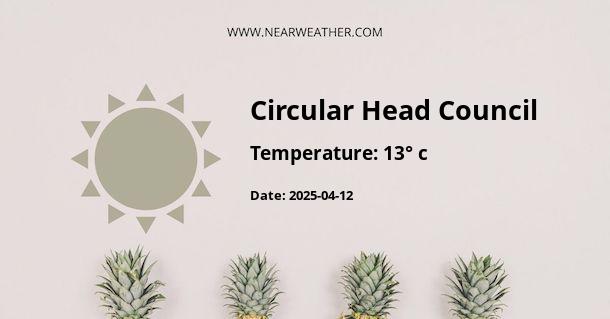Circular Head, Australia: Climate and Weather Overview
Circular Head, located in the northwest coast of Tasmania, Australia, experiences a temperate oceanic climate with mild, wet winters and relatively cool, drier summers. The region is known for its diverse landscape, including coastal areas, agricultural land, and pristine wilderness. Understanding the year-round climate and weather patterns is essential for residents, businesses, and tourists alike. Let's delve into a detailed analysis of the climate and weather in Circular Head throughout the year.
Seasonal Weather Patterns
The climate in Circular Head can be categorized into four distinct seasons: spring, summer, autumn, and winter. Each season brings unique weather conditions that define the region's climate.
| Season | Average Temperature (°C) |
|---|---|
| Spring (September - November) | 8°C - 17°C |
| Summer (December - February) | 12°C - 21°C |
| Autumn (March - May) | 9°C - 16°C |
| Winter (June - August) | 6°C - 13°C |
As seen from the table, temperatures in Circular Head remain relatively mild throughout the year, with the highest average temperatures occurring in summer and the lowest in winter. This consistent temperature range makes the region favorable for outdoor activities and tourism year-round.
Rainfall and Precipitation
Rainfall patterns play a significant role in defining the climate of Circular Head. The region receives a substantial amount of rainfall, particularly during the winter months. This can impact various industries, including agriculture and tourism.
| Month | Rainfall (mm) |
|---|---|
| January | 54 mm |
| February | 46 mm |
| March | 54 mm |
| April | 67 mm |
| May | 88 mm |
| June | 107 mm |
| July | 121 mm |
| August | 122 mm |
| September | 89 mm |
| October | 80 mm |
| November | 72 mm |
| December | 61 mm |
The data illustrates the variability of rainfall throughout the year, with the wettest months occurring from June to August. This information is crucial for those involved in agriculture and local businesses, as well as for travelers planning their visit to Circular Head.
Wind Patterns
Understanding wind patterns is imperative, especially for coastal regions such as Circular Head. The prevailing winds can significantly impact activities such as boating, fishing, and outdoor recreational pursuits.
The northwest coast of Tasmania, including the Circular Head region, experiences predominant west to southwesterly winds. These winds are influenced by various weather systems and can impact the region's maritime activities and climatic conditions.
Extreme Weather Events
While Circular Head generally experiences mild weather conditions throughout the year, it is essential to be prepared for occasional extreme weather events, including storms and heavy rainfall. These events can have ramifications for local infrastructure, agriculture, and community safety.
Conclusion
Circular Head's climate and weather present a blend of mild temperatures, significant rainfall, and unique wind patterns, shaping the region's distinct character and influencing various aspects of life within the area. By understanding these climate and weather factors, residents, businesses, and visitors can make informed decisions and adapt to the seasonal changes that define Circular Head's environment.
Ultimately, the diverse climate and weather patterns contribute to the allure of Circular Head, making it an intriguing destination for those seeking to experience the natural beauty and richness of Tasmania's northwest coast.
A - Circular Head Council's Latitude is -41.019909 & Longitude is 145.083664.
A - Weather in Circular Head Council is 19° today.
A - Climate Conditions in Circular Head Council shows clear sky today.
A - Humidity in Circular Head Council is 59% today.
A - Wind speed in Circular Head Council is 10.76 km/h, flowing at 339° wind direction. today.
